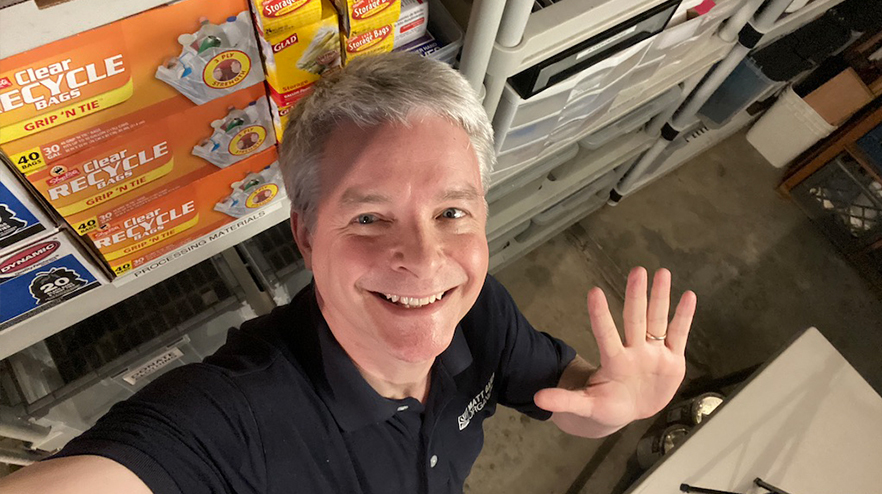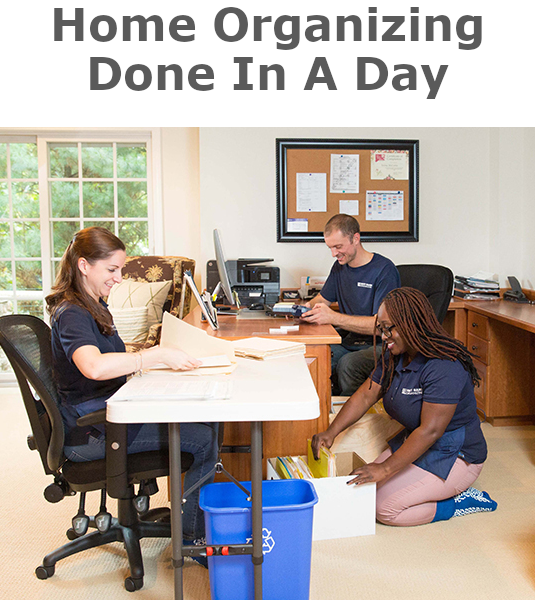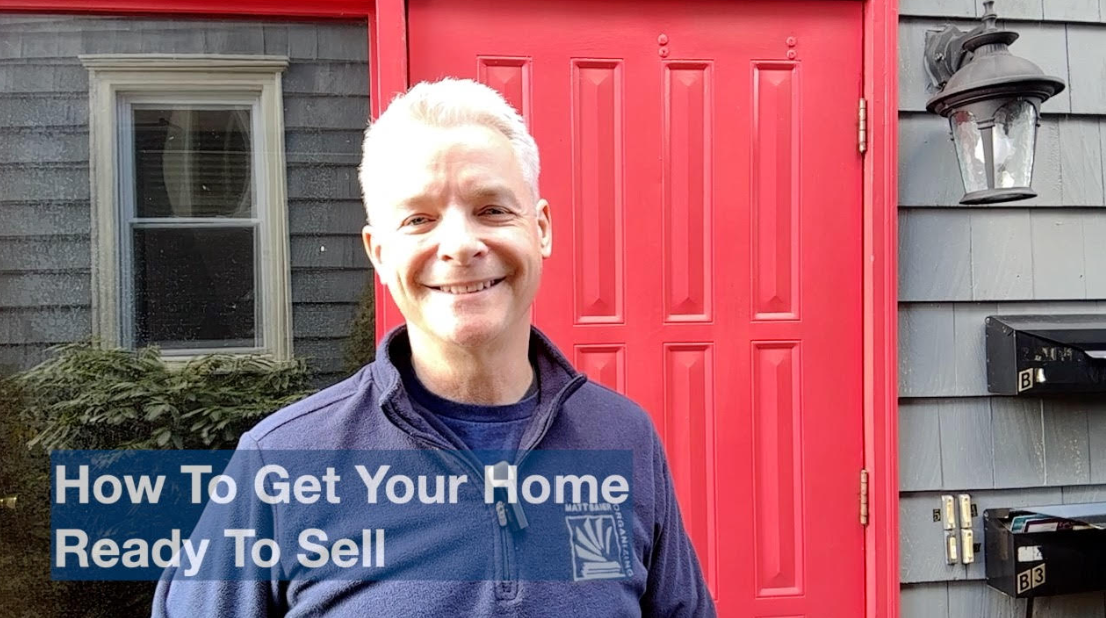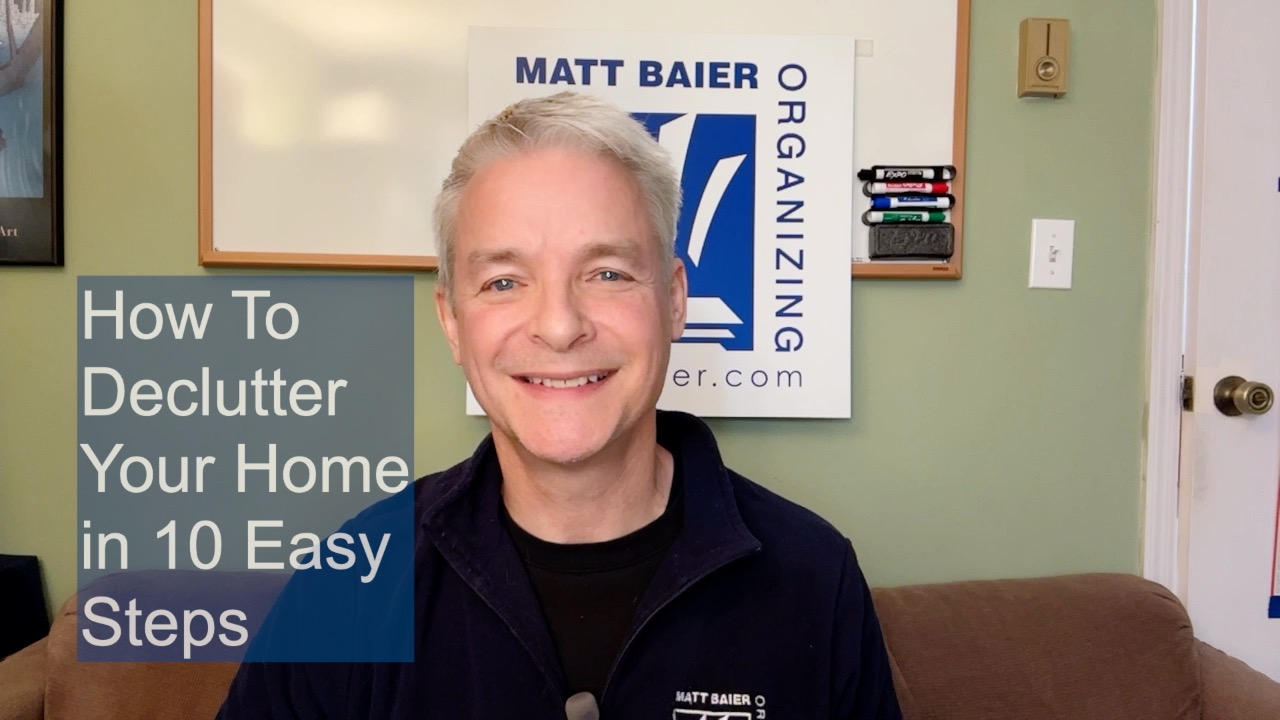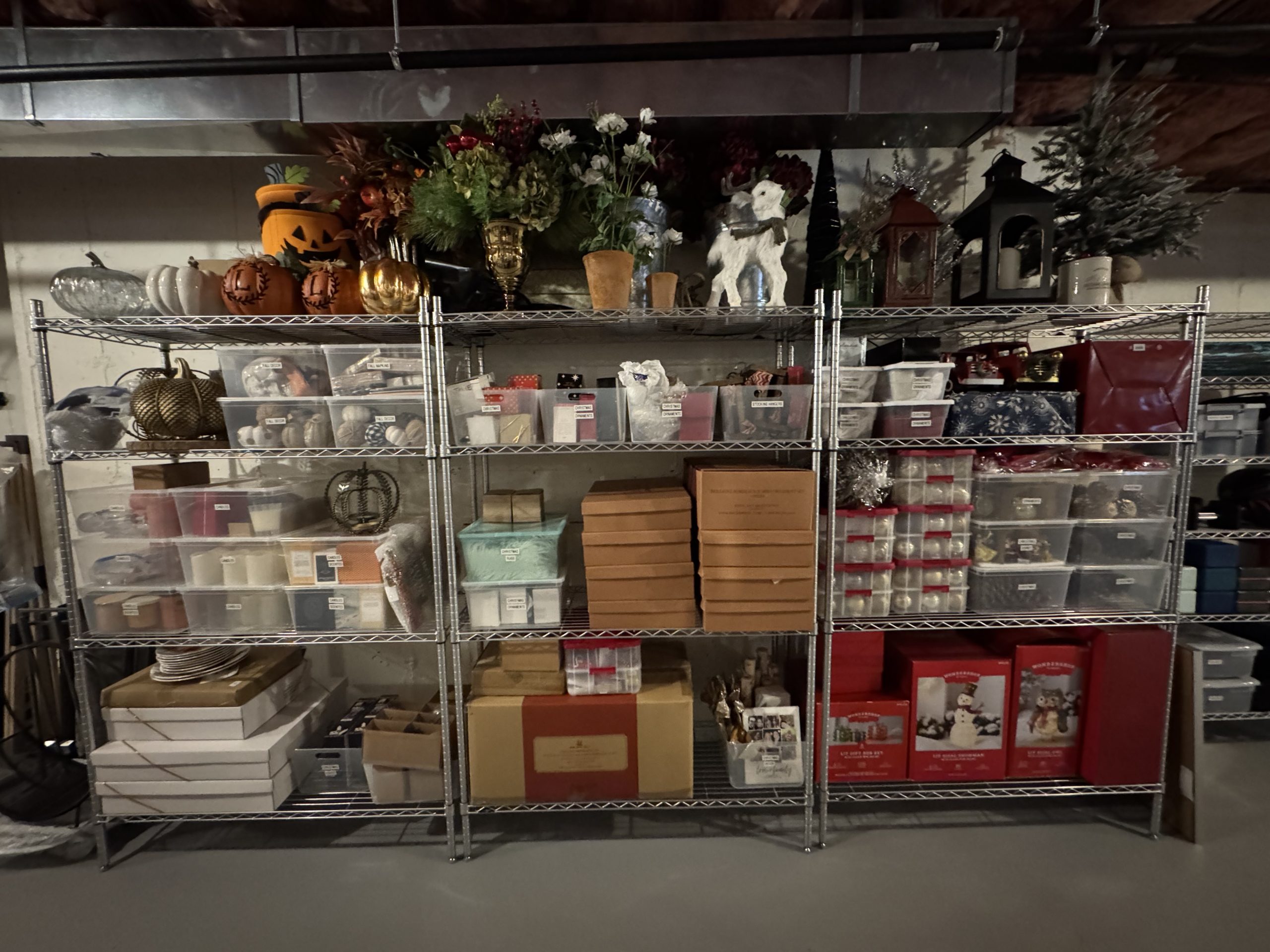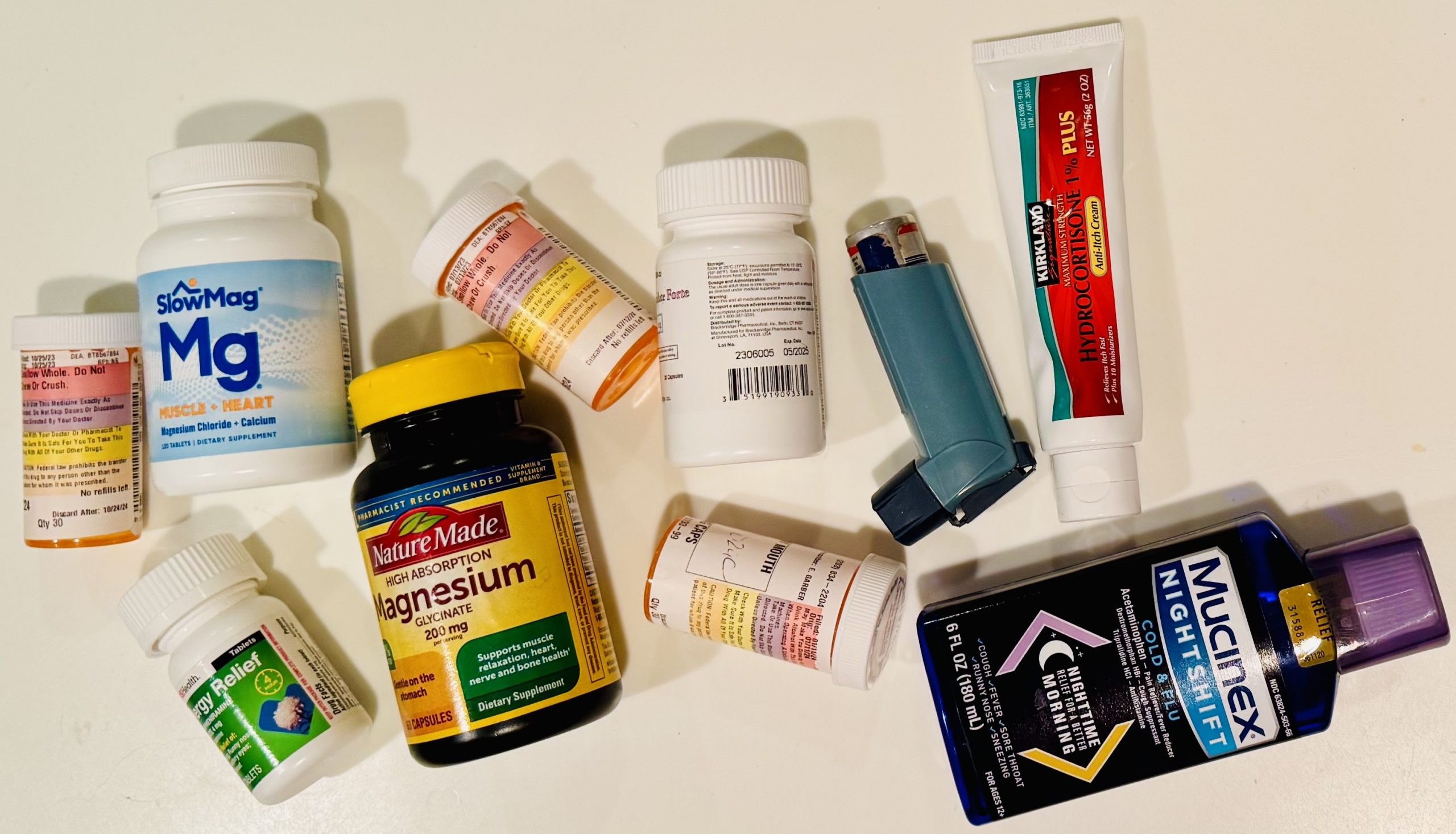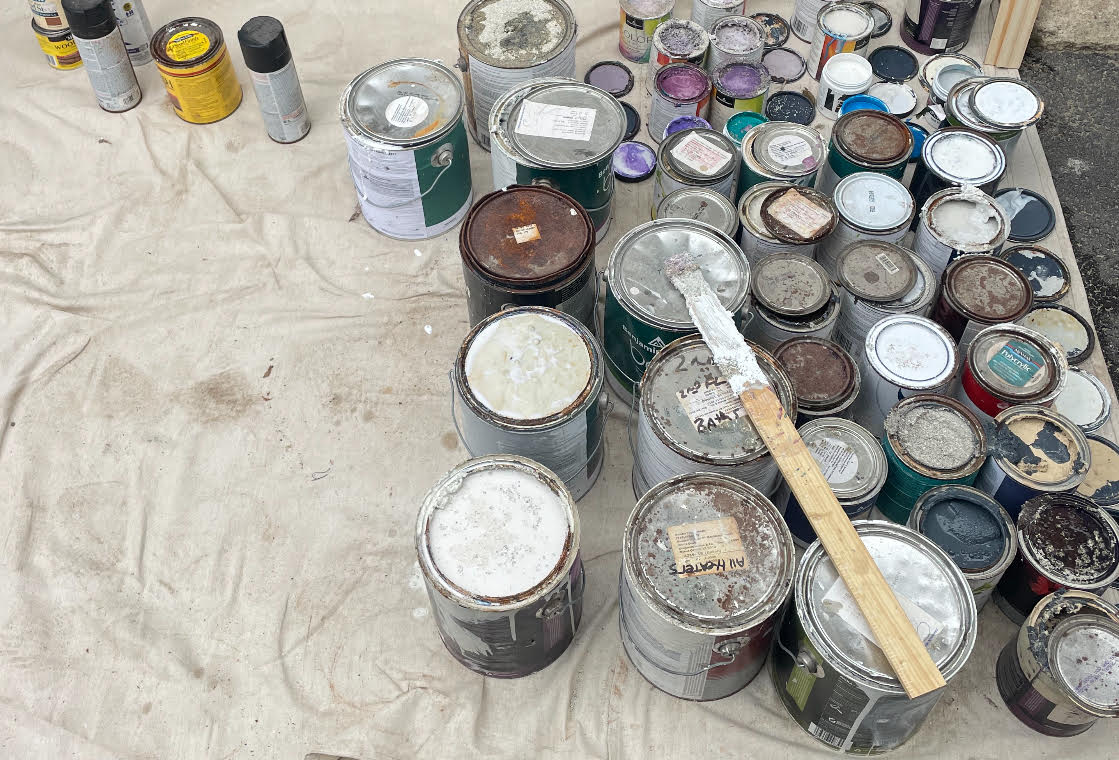This week I look at organizing your garage storage vertically. Last week I described how there are essentially three types of storage in your garage: Shelve-ables, hang-ables, and non-negotiables. Today we look at the first one: shelving. Not all shelves are made the same and not every container that goes on them is the same.
Choosing the right shelves
In most cases you’ll be fine with free standing shelves. The most affordable option are plastic shelves. They are available in 24 inch deep and 18 inch deep sizes. Before you run out and buy the deeper ones, be sure you really need them. They eat up an extra half foot of floor space. That may make a big difference, when it comes to opening a car door.
Chrome wire shelves are another popular option. Besides having adjustable shelves, there are more sizes choices. These include a 14 inch deep option. They are however about twice as expensive as the plastic option.
One more thing to consider in shelf choice is assembly time. The plastic shelves assemble in about 10 minutes. The wire shelves take about 20 minutes and require more than one person.
Cabinets (enclosed shelves)
Then there are the enclosed shelves, otherwise known as cabinets. I know many homeowners prefer the look of cabinets over open shelves and that’s fine. However, be aware that they can compromise visibility, find-ability, and circulation.
Circulation is the subject of my book The Circulation Solution. It means a plan for movement in a series of manageable, reliable stages. I just find that open shelves offer a more open field of play, for things that need to circulate regularly.
Monkey Bars shelving
Finally, on the subject of garage shelves are Monkey Bars Garage Storage System. The thinking with this garage system is that you can hang large awkward NON shelve-able items below the shelves. You can then stack less-used items on their deep shelves. We’ll cover the hangable options next week. Do you have a lot of seasonal or just-in-case items that you can store more remotely? If so, then this installed solution might be the right answer for you.
Choosing the right containers
Once you are clear on the shelf sizes you need, it’s time to look at the container choices. One of the easiest choices are the flip top bins. They are inexpensive and widely available. They are a perfect fit for 2-per-shelf on these 18” deep plastic shelves. AND with the flip top, you never lose a lid.
The popular heavy-duty black bins may make sense for tools and hardware, but wherever possible my rule is reveal, don’t conceal.
One medium bin option I like in the garage are plastic file boxes. They are made for files but they are sturdy and fit well on these shelves.
The 64 quart bin is a favorite with our clients. It fits perfectly if you have the 24 inch deep shelves. And if you have the 24” deep with the 48” wide shelves, something else can happen. You can also work in some smaller 25 quart bins perfectly. A few smaller ones come in handy for smaller items.
Another great option for smaller items are shallow drawers. Just be sure to place drawers on shelves below eye level.
Container Placement
As for other placement, frequency merits facility. Items you access the most regularly, should be placed at eye level. Heavier items should ideally be located at the lowest level. This is not only safer, but helps stabilize the shelves. Items you use the least, should go at the top level. Between top and eye level is a good place to store harmful chemicals, away from children. If there’s a lot this may also provide justification for the cabinets. In any case, don’t store the chemicals at floor level.
Labeling
Clear bins are better, but clear, labeled bins are bestI You can go quite large with the Brother P-Touch label, but here’s a supplemental option. Use vinyl envelopes to hold large labels. They make it easy to switch out contents, perhaps seasonally.
No lid, no bin
For items that are not taking up residence, I like this lid-less bin. Items that I want to make a point of returning go in this one of these. Items I want to donate, go in these two. More on that in a couple weeks.
Finally, Sometimes the best container is no container at all. Packaged items speak for themselves and if they can stack without the container, they are more easily accessed.
Next week I will look at hangable storage options in the garage. Did I miss a shelve-able garage option that you like? Let me know!
Please Share With Your Community

